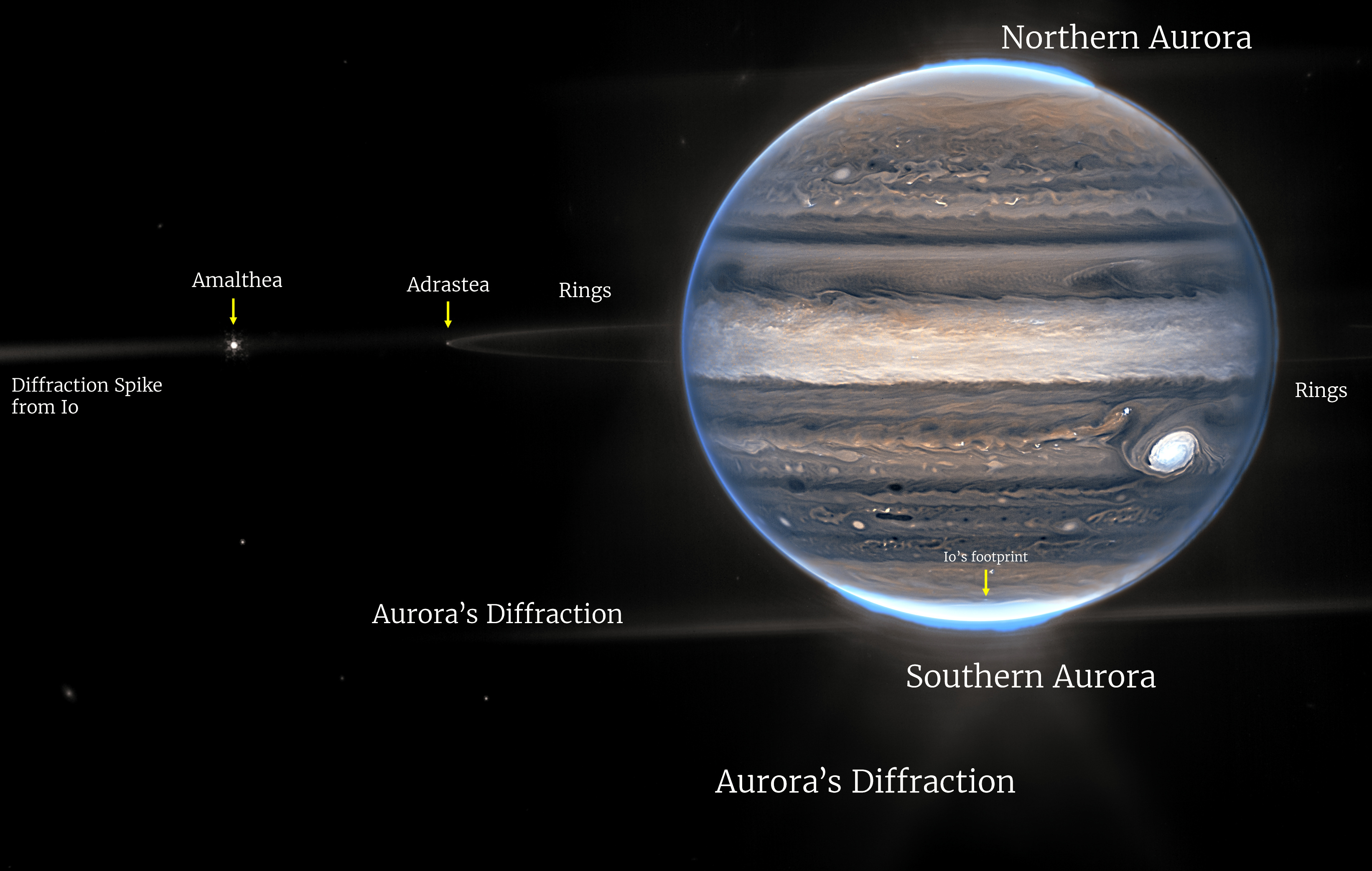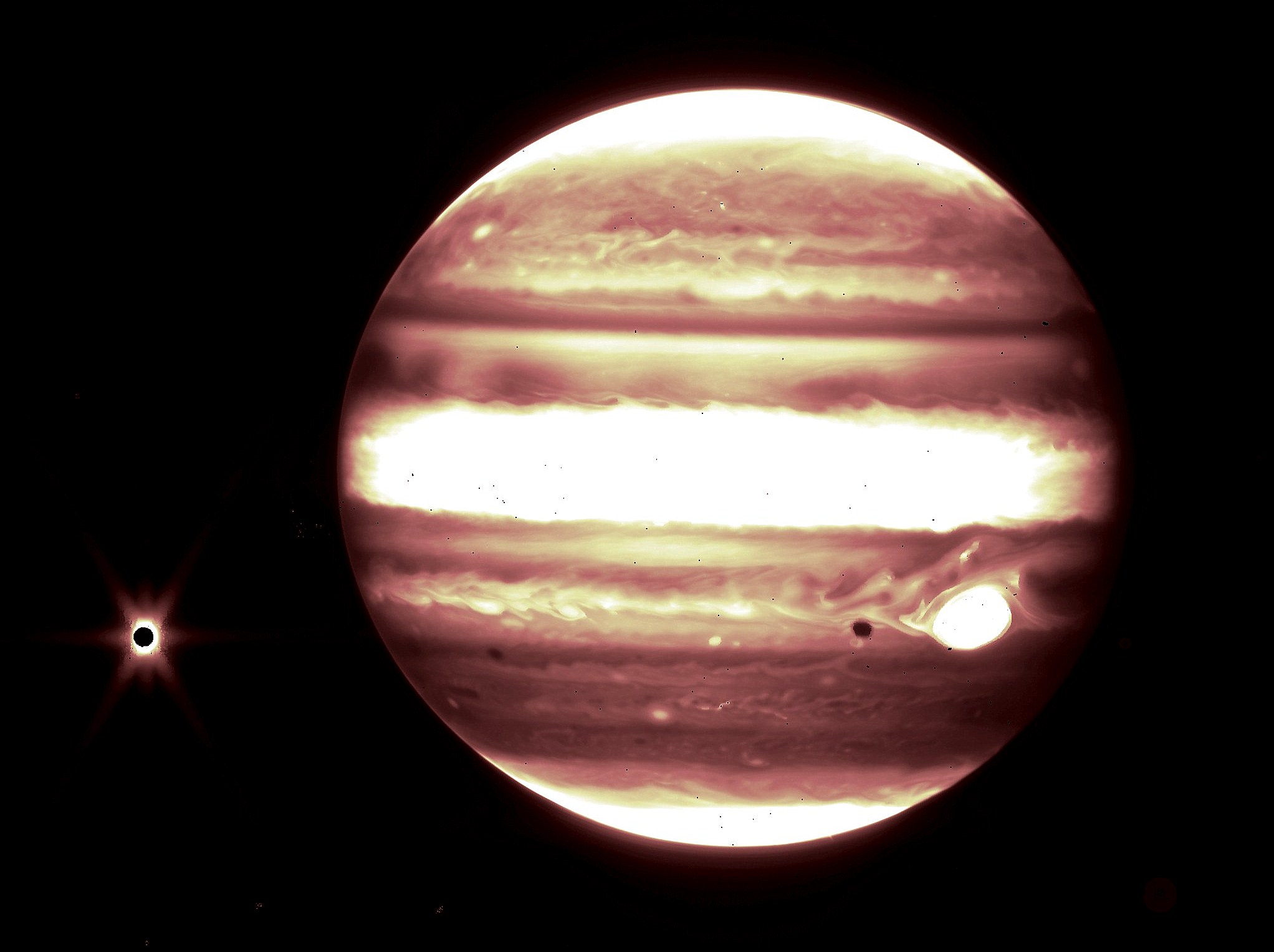Webb Does Jupiter
Jupiter in near infrared light (credit: NASA/ESA/JWST)
The James Webb Space Telescope (JWST) has turned its powerful lenses to the gas giant, Jupiter. According to NASA and the Agency's international partners, two images were made by the observatory's near-infrared (IR) camera that carries three different infrared filters to showcase details of the planet. Infrared light is invisible to the human eye so the light was "mapped" onto the visible spectrum where longer wavelengths appear redder and shorter ones appear more blue.
In the planetary view of Jupiter, a composite of several Webb images showing auroras extending to high altitudes above the planet's northern and southern poles. The auroras shine in the redder colors, which also highlights light reflected off lower clouds. A separate filter, mapped to yellows and greens, shows hazes swirling around both poles. A third IR filter, mapped to blues, shows light reflected from deeper cloud layers. Jupiter's Great Red Spot, a cyclone so big it could swallow the Earth, appears white because it reflects considerable sunlight.


Jupiter with polar auroras and faint rings (credit: NASA/ESA/JWST) & Jupiter with Europa (credit: NASA/ESA/JWST)
A second JWST image faintly has a band of rings circling the planet. A previous IR image captured Jupiter's icy moon Europa glowing from sunlight reflected off its frozen surface. The Jet Propulsion Laboratory at CalTech is assembling the Europa Clipper for a mission to that ice covered moon. It is scheduled to launch in 2024 and is to be outfitted with powerful sensors, cameras, and sensitive spectrometers to scan Europa's global ocean. This 'water world' may have offered environments suitable for life to have evolved. IR filters will also image the moon's surface looking for heat signatures easily seen in infrared wavelengths. WHB